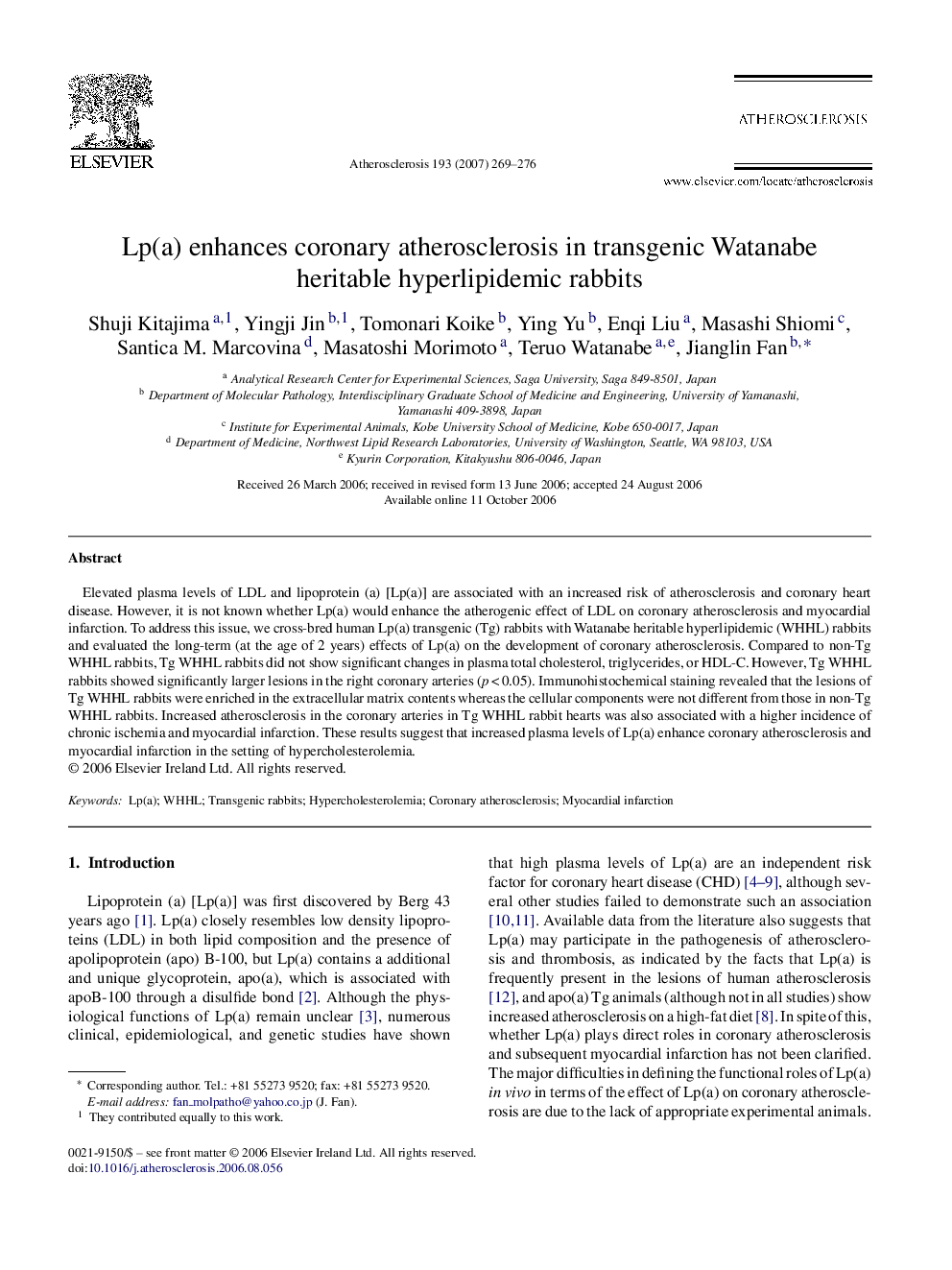| Article ID | Journal | Published Year | Pages | File Type |
|---|---|---|---|---|
| 2894347 | Atherosclerosis | 2007 | 8 Pages |
Elevated plasma levels of LDL and lipoprotein (a) [Lp(a)] are associated with an increased risk of atherosclerosis and coronary heart disease. However, it is not known whether Lp(a) would enhance the atherogenic effect of LDL on coronary atherosclerosis and myocardial infarction. To address this issue, we cross-bred human Lp(a) transgenic (Tg) rabbits with Watanabe heritable hyperlipidemic (WHHL) rabbits and evaluated the long-term (at the age of 2 years) effects of Lp(a) on the development of coronary atherosclerosis. Compared to non-Tg WHHL rabbits, Tg WHHL rabbits did not show significant changes in plasma total cholesterol, triglycerides, or HDL-C. However, Tg WHHL rabbits showed significantly larger lesions in the right coronary arteries (p < 0.05). Immunohistochemical staining revealed that the lesions of Tg WHHL rabbits were enriched in the extracellular matrix contents whereas the cellular components were not different from those in non-Tg WHHL rabbits. Increased atherosclerosis in the coronary arteries in Tg WHHL rabbit hearts was also associated with a higher incidence of chronic ischemia and myocardial infarction. These results suggest that increased plasma levels of Lp(a) enhance coronary atherosclerosis and myocardial infarction in the setting of hypercholesterolemia.
